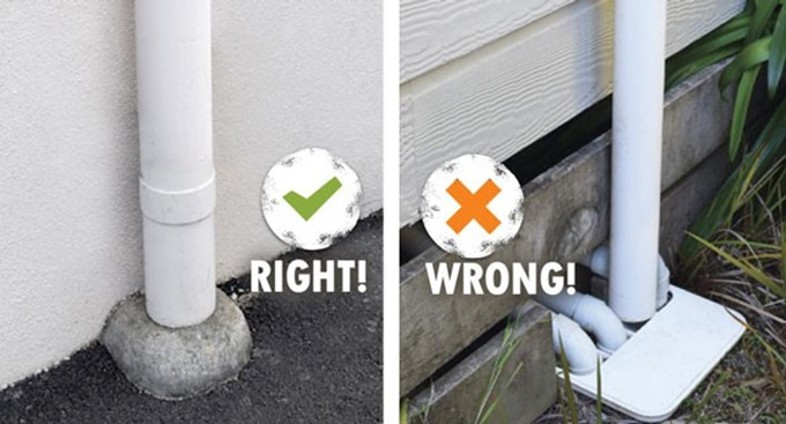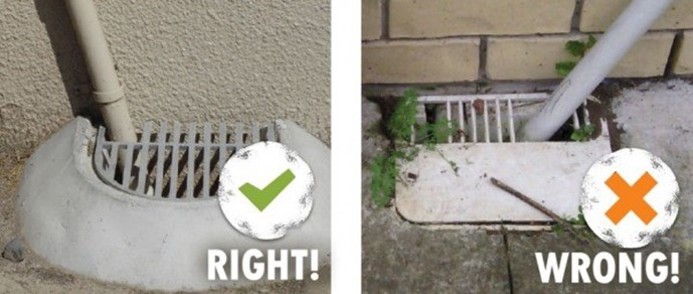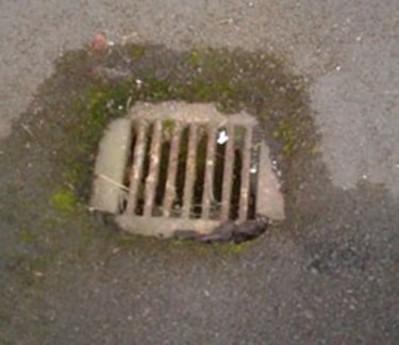-
Services
-
expand_more
Back
Services
-
-
expand_more
Back
Alcohol Licensing
- Alcohol Public Notices
- Find the right alcohol licence and apply
- Alcohol licence fee calculator
- Renew and/or vary your alcohol licence
- Manager's certificates
- Legal requirements for licence holders
- District Licensing Committee decisions
- ARLA annual report
- Alcohol-Free Areas In Public Places
- Have your say on alcohol licence applications
- All alcohol licensing forms
- Gambling Information
-
-
expand_more
Back
Rates & Property
- Setting the Rates
- Revaluation and how it affects rates
- Rates Dates & Payment Options
- Changing your details
- Property Information Search
- Online Rates Payments
- Rates Rebates, Remission & Postponement
- Short-Term Visitor Accommodation
- Queenstown CBD Transport Rate for Queenstown Town Centre Properties
- Wastewater Rates for Cardrona
- Other Information
- Rates FAQs
-
-
expand_more
Back
Resource Consents
- Do I need a resource consent?
- Change, extend or surrender a resource consent
- Before you apply
- Apply for a resource consent
- Non-compliance & monitoring
- Notified consents
- Subdividing and Land Development
- Need help?
- Current resource consents
- eDocs
- FAQs
- Practice notes and guidance
-
-
expand_more
Back
Rubbish & Recycling
- How we recycle in the Queenstown Lakes District
- Cut your waste
- Commercial Services
- Public place litter bins and illegal dumping
- Rubbish & Recycling Collection
- Recycling Centres
- Transfer Stations
- Solid Waste Assessment
- Waste Minimisation Community Fund
- Waste Minimisation for Businesses
- Zero Waste Events
- Green and food waste
- Construction and demolition waste
- Waste Management and Minimisation Plan 2025-2031
-
Do It Online
-
expand_more
Back
Do It Online
-
-
expand_more
Back
Registrations
- Register your Dog
- Register for a transfer or refund of dog registration fee
- Renewal for Campgrounds and Offensive Trade Registrations
- Activities in a Public Place - Registration/Application Form
- Register as a Homestay
- Register as Residential Visitor Accommodation
- Register for our public notification list
- Register to speak at Public Forum
- Register for Kerbside Collection Services
- No Spray Register
-
Community
Community
Ngā Hapori
- Arts, Culture and Heritage
- Citizenship Ceremonies
- Community Associations and Groups
- Community Connect
- Community Funding
- Community Research
- Community Wellbeing
- Economic Development
- Emergency Management
- Energy Saving Tips
- Event Planning and Venues
- Manaaki
- Managing the risk of wildfire
- Māori Community
- Newcomers Guide
- Population and Demand
- Summerdaze
- Tuia Programme
- Welcoming Communities
- Venue Hire

Summerdaze
A collection of events happening district-wide over the summer months.
-
Recreation
Recreation
Kā mahi a te rēhia
- Queenstown Events Centre
- Wānaka Recreation Centre
- Paetara Aspiring Central
- Swim
- Learn to Swim
- Golf
- Kids' Recreation
- Sport & Rec Venues and Contacts
- Courts and Fields
- Memberships - Join Today
- Join the Sport & Rec Team
- Responsible Camping
- Parks and Walkways
- Lakes and Boating
- Mountain Biking
- Horse Riding
- Splash Café
- Physiotherapy
- Playgrounds
- School Holiday Programmes
- This Is Sport & Recreation
- Sport & Recreation Captial Projects

Camping this summer?
We have new rules on freedom camping. Make sure you know before you go!
-
Your Council
Your Council
Te Kaunihera ā-rohe
- Careers
- Climate Change and Biodiversity
- Consultations
- Council Documents
- Council Meetings
- Council Projects
- District Plan
- Elected Members
- Elections
- Fast-track Approvals Act
- LGOIMA (information) requests
- Media Centre
- News
- Newsletter Archive
- Our Strategic Framework
- Public Notices
- Sister Cities
- User Fees and Charges

Elected Members
Get to know your elected members and how to contact them.
-
expand_more
Back
Your Council
-
-
expand_more
Back
Council Documents
- Annual Plans
- Annual Reports
- Archived Agendas & Minutes
- Asset Management Plans
- Awarded Council Contracts
- Bylaws
- Capex Quarterly Update
- Long Term Plan (LTP)
- Monthly Reports
- National Policy Statement - Urban Development 2020 (NPS-UD)
- Policies
- Pre-election reports
- Queenstown Lakes Spatial Plan
- Reserve Management Plans
- Section 10A Reports
- Small Community Plans
- Strategies and Publications
- Submissions from QLDC
-
-
expand_more
Back
Council Projects
- Project Tohu
- Queenstown Town Centre Arterial
- McPhee Park Playground
- Blue-Green Network Plan
- Frankton Track Wastewater Upgrades
- Aubrey Road Wastewater Pipe Upgrades
- Luggate Water Upgrades
- Kingston Infrastructure Works
- Queenstown Town Centre Street Upgrades
- Way To Go
- Our Water Done Well
- Upper Clutha Wastewater Conveyance Scheme
- Shotover Wastewater Treatment Plant Stage 3 upgrades
- Short term approach for managing wastewater discharge
- Long term solution for Shotover Wastewater Treatment Plant
- Smart Water Meters Trial
- Environmental Monitoring System
- Lakeview Development
- Mount Iron Reserve Management Plan
- Project Manawa
- Wānaka Airport Certification
- Wānaka Airport Future Review
- Improving housing outcomes
- Queenstown Lakes Home Strategy
- Upgraded Two Mile UV Treatment Plant
- Frankton Road Watermain Upgrades
- Glenorchy Water Treatment Upgrades
- Upper Clutha Safety Improvements Programme
- Cardrona Valley Water Supply Scheme
- Schools to pool active travel route
- All-weather turf at Queenstown Events Centre
- Arthurs Point to Queenstown shared path
- 101 Ballantyne Road Masterplan
- Ballantyne Road Upgrade
- Cardrona Valley Wastewater Upgrade
- Glenorchy Reservoirs
- Frankton Campground
- Frankton Stormwater Upgrade
- Marine Parade Upgrades
- Mayoral Housing Affordability Taskforce
- Shotover Country Borefield and Treatment Plant
- Proposed Visitor Levy
- Ladies Mile Masterplan
- Recreation Ground Wastewater Pump Station and Rising Main
- Luggate Memorial Centre
- Te Kararo Queenstown Gardens
- Western Wānaka Water Supply Upgrade
- Shotover Bridge Water and Wastewater Main
- Te Tapuae Southern Corridor
- Glenorchy Marina Carpark
- Wānaka Lakefront Development Plan
- Travel Demand Management Programme
- Peninsula Bay Reserve Regeneration
- Merton Park Playground
- Tucker Beach closed landfill rehabilitation
- QEC Indoor Court Expansion
- 101 Ballantyne Road Remediation
- Energy upgrades at Aquatic facilities
-
-
expand_more
Back
District Plan
- Operative District Plan
- Proposed District Plan
- ePlans
- National Policy Statement-Urban Development (District Plan Amendments)
- Urban Intensification Variation
- Te Pūtahi Ladies Mile Variation
- Private Plan Change 1 - The Hills Resort Zone
- Upper Clutha Landscape Schedules Variation
- Priority Area Landscape Schedules
- Special Zones Review
- District Plan Maps
- A Guide to Plan Changes
- Planning Matters - Planning & Development Newsletter
- Services
- Airports
- Alcohol Licensing
- Animal Control
- Building Services
- CCTV - Public Use
- Cemeteries
- Environment and Sustainability
- Environmental Health
- Permits
- Rates & Property
- Resource Consents
- Rubbish & Recycling
- Services A - Z
- Summer Services
- Transport and Parking
- Water Services
Inflow and infiltration
Let’s keep wastewater in its place!
We live in one of the most beautiful corners of the world and our environment is particularly close to our hearts. We’re very lucky to be able to enjoy some stunning local lakes and rivers so naturally we want to protect these as much as we can.
Like many places, we sometimes experience wastewater overflows during heavy rain which can result in it entering our waterways. This can have a detrimental effect on ecosystems and isn’t very pleasant for anyone.
Quick links
What is it?
Inflow and infiltration (I&I) refers to rainwater and groundwater entering the wastewater system through a variety of defects on public and private property:
-
Inflow sources allow rainwater to enter the wastewater system directly from the surface through incorrect plumbing, cross connections and damaged or low-lying gully traps or manholes.
-
Infiltration sources allow groundwater to seep into the wastewater system through cracks or bad joints in wastewater pipes and manholes.
A certain amount of I&I is unavoidable. We plan for it when designing wastewater systems. But too much, especially during severe weather events, can overwhelm the system leading to overflows with associated risks to health and the environment.
The increased frequency of extreme weather events due to the effects of climate change and continued population growth in our district is increasing the risk of overflows. This means we need to start taking wider action and QLDC has prioritised further work on this issue.
Our cuzzies at Nelson City Council created an awesome video on I&I which, in the spirit of reduce, reuse, recycle, we’d like to share here. Even though there are some differences between there and here, the essential information is the same. Check it out below:
What are we doing about it?
We’ve been working to address I&I for some time. Council has been inspecting its own properties for any issues and fixing them as needed. We’re also continuing to carry out an extensive programme of renewals and repairs to the piped network through our Three Waters investment programme.
In partnership with our contractors Veolia, we’re now conducting inspections on private properties to identify potential issues. This will give us a fuller picture of the extent of the problem and help us refine our work to reduce it.
These inspections will initially be in Queenstown before we work across the whole district. During our visit we’ll explain what we’re looking for and discuss any potential issues we find with you.
How you can help
As a property owner, you play an important role in addressing this issue and helping to reduce the risk of overflows. If you find any issues that you can easily resolve please take action now and be part of the solution.
Please go outside your property and check three things:
-
downpipes;
-
gully traps; and
-
sumps.
Read on for more info about these.
-
Look at your roof, where do your downpipes go? They should connect to the stormwater system not the sewer/wastewater system. If your downpipes connect to a gully trap then you’ll need to redirect it into the stormwater system.
Close
-
These are part of the wastewater drainage system from kitchens, bathrooms (apart from toilets!) and washing machines before the discharge enters the sewer system.
They are located externally to ensure that if the drainage system becomes blocked the wastewater will overflow outside instead of inside the building. Gully traps include a water seal to block odours from the sewer.
What should my gully trap look like?

The top or surround of the gully trap should be above ground level and partially covered to stop stormwater/rainwater and other things like landscaping bark entering the wastewater network.
Gully traps must be installed correctly to stop stormwater entering the wastewater network.
What does the Building Code say about gully traps?
The Building Code has precise requirements for their installation and location. The surrounds of the gully trap have to be 25mm above a paved surface or 100mm above an unpaved surface. As well as locating and building them correctly, make sure any decks and other structures built over the top allow access for cleaning.
For more info on this visit building.govt.nz.
Close -
A sump is a stormwater feature that collects rainwater from external surfaces such as driveways and patios. The sump must connect to the stormwater system, not the sewer/wastewater system.
The only way to test for a cross connection without calling a plumber or drain layer is to check for a foul odour that is stronger than a normal organic/vegetation smell.
Close
Contact us
Thanks for using this information to check your own property. We’re happy to answer any further questions you may have – simply email:
assetdamage@qldc.govt.nz
Tag your email with ‘inflow and infiltration’ in the subject line.
Stay up-to-date
Sign up to our newsletters and stay up-to-date with the latest news, events & information in the Queenstown Lakes District.


